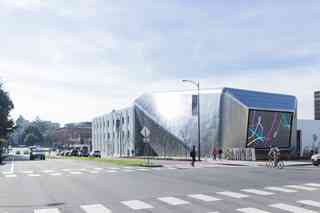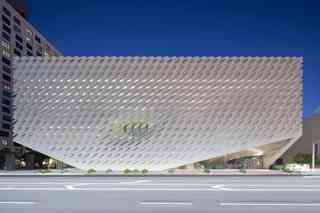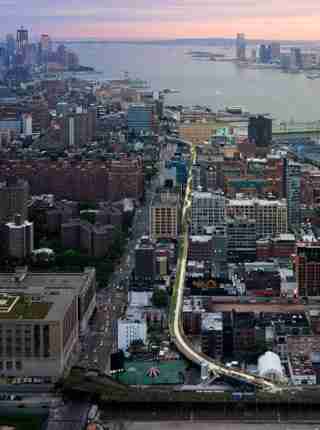
The New York–based design studio Diller Scofidio + Renfro, helmed by Elizabeth Diller, Ricardo Scofidio, and Charles Renfro, is known for its daring projects that challenge architectural convention. From its popular High Line park on Manhattan's West Side, created on an elevated railroad, to its buzzy Broad in Los Angeles that transforms the museum's usually concealed vault into an integral part of the interior, the firm makes use of glass walls and public spaces to provoke cultural exchange.
The recently completed University of California Berkeley Art Museum is a striking example of adaptive reuse. Architecture firm Diller Scofidio + Renfro spliced an existing 1939 Press Building on one side and inserted a contemporary, precision-formed stainless-steel structure that allowed for additional amenities—a film theater, library, study center, and café—and dramatically altered the silhouette of the building.

The white, porous façade of the Broad Museum in Los Angeles allows the building’s sculptural, futuristic interior to be bathed in natural light.

The High Line—a 1.5-mile-long public park created in collaboration with Piet Oudolf and James Corner Field Operations on an abandoned elevated railroad—has come to define Manhattan’s West Side.
For its redesign of the Juilliard School in New York, Diller Scofidio + Renfro extended the nose of Pietro Belluschi’s Brutalist building into a cantilevered point with public space below. For the adjoining Tully Hall expansion, the architects stripped away the opaque base on the east façade and added a glass wall that showcases the performance hall within.
For the Blur Building, created for the Swiss Expo in 2002, water is pumped from Lake Neuchâtel and turned into a thick fog surrounding the structure.
On any given floor of the Creative Arts Center that Diller Scofidio + Renfro designed for Brown University in Providence, Rhode Island, you can face two other levels of the building through glass walls, allowing for maximum creative exchange.
The Institute of Contemporary Art in Boston—the first museum built in the city in 100 years—cantilevers over the now very buzzy waterfront.
